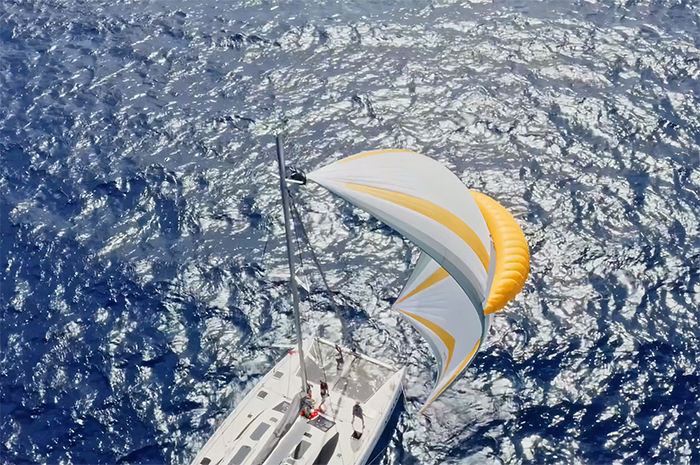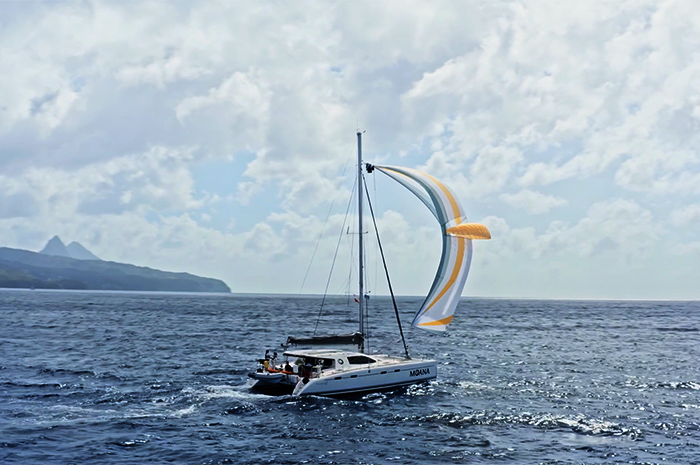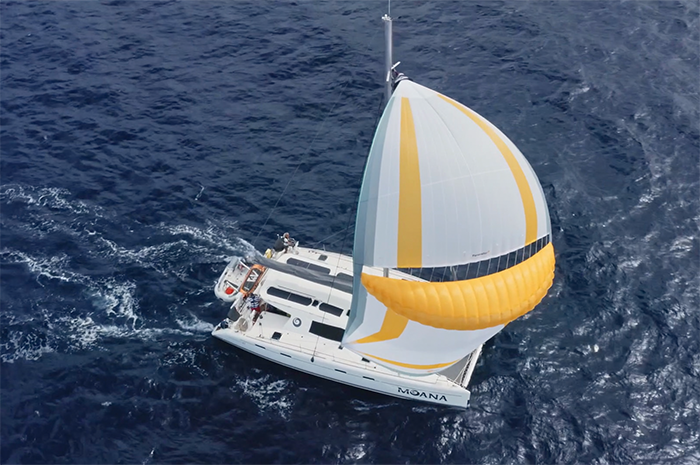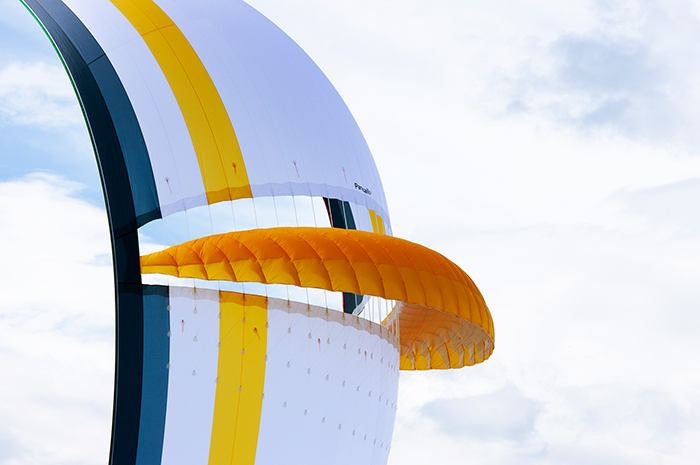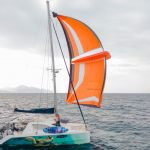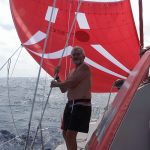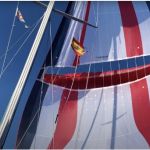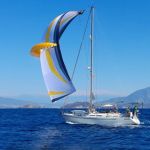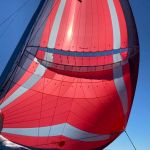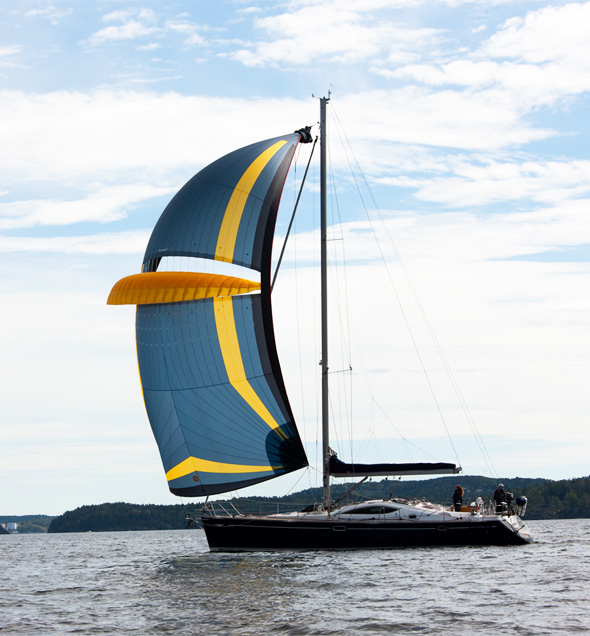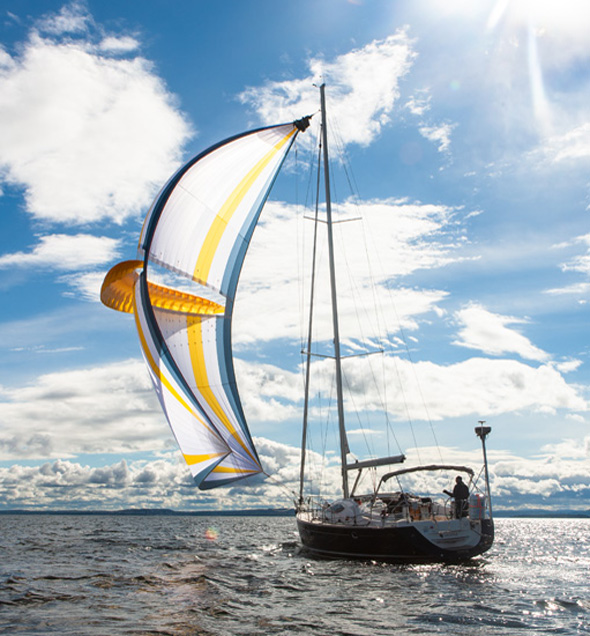In this context, “laminar flow” refers to the way the wind flows around the sail. A conventional spinnaker, especially a symmetrical spinnaker, is a closed system where the wind enters the sail, swirls and then “spills” out over one side. This leads to turbulence, which can cause the spinnaker to rock back and forth and not remain stable in one position. This is extremely uncomfortable on a trip lasting several weeks, such as an Atlantic crossing.
Parasailor is designed to catch/channel the wind current and keep it free of turbulence. This is achieved through an opening in the sail, which is required for the inflow of the hybrid wing. As a result, the air flows through the sail gently and without turbulent eddies. The result is a more stable position of the sail and less tendency to rock back and forth, even at low wind speeds of 2-3 knots.
In other words, the laminar flow achieved by the design of the Parasailor sail, in addition to the lift of the hybrid wing, contributes to a smoother and more stable sail, even in changing wind conditions. The comfort and safety of sailing are noticeably improved.
